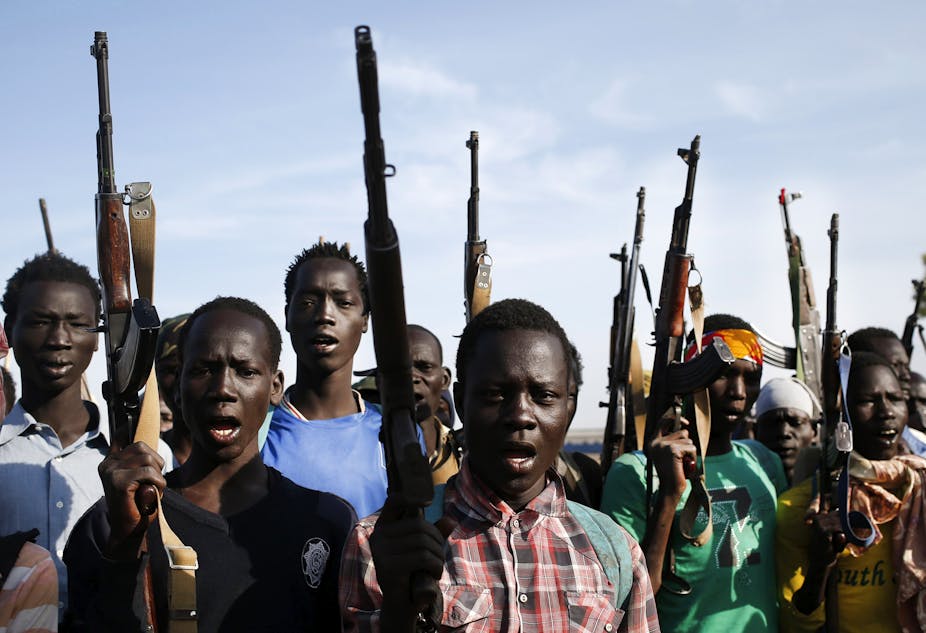German Chancellor Angela Merkel recently commented that large industrialised countries should be more open to transferring weapons as part of their development aid so that African countries can battle militant groups. This followed complaints from several African leaders, while discussing Germany’s “Compact with Africa”, that they were expected to combat militancy without receiving significant military aid from the West.
Merkel’s statement may sound surprising. In all fairness, however, her Compact with Africa – a flagship programme for boosting private investment in Africa – emphasises sustained and inclusive economic development. In addition, African governments have as much right as any other government to protect their national interests. This requires appropriate security forces and equipment.
Nevertheless, Merkel’s proposal needs to be approached with great caution and on a country by country basis. Certain conditions should be met before countries receive any arms. These should include; an understanding that they won’t be used against legitimate internal protests, that they won’t be transferred to rebel groups in neighbouring countries. Countries that already have more arms than they need should be excluded. Finally, donor governments need to be aware that some governments label legitimate opposition groups as terrorists or militants to attract Western support.
Western military assistance to Africa
There’s the additional concern that much of Africa is awash in arms. This is particularly in the case of small arms that often elude government control and fall in the hands of non-state actors.
By one estimate, there are 100 million uncontrolled small arms and light weapons in African crisis zones. Some of these weapons were once in government stocks but are now being used by terrorist organisations such as al-Shabaab in Somalia and Boko Haram in Nigeria.
The Horn of Africa has been especially susceptible to the misuse of imported weapons. Civil war is ravaging in South Sudan where its oil economy resulted in military spending in 2015 of almost 14% of GDP. Sudan is the largest arms importer in the Horn and continues to take delivery of advanced ground attack aircraft and multiple rocket launchers.
But Western bilateral military assistance to Africa is modest compared to arms sales from all sources and consists mostly of training. US security assistance to Africa, for example, barely registers if you omit Egypt.
The Trump administration is making an argument that contains aspects of Merkel’s suggestion. It proposed major cuts in humanitarian and development aid to Africa while shifting some of this to security assistance. But even US military officials are concerned that shifting these funds will hurt American interests in the long term by failing to stimulate development.
Major African beneficiaries of US military assistance in recent years include; Djibouti, Ethiopia, Uganda, Chad, Cameroon and Mauritania. While they face legitimate security threats, they also pose serious questions about democratisation and human rights.
Merkel has a more valid point if the issue is military training, particularly for African armies that have demonstrated a willingness and ability to combat militant groups. Any government has more flexibility if it can purchase weapons rather than depend on military assistance – both equipment and training.
Most African countries don’t seem to have a problem prioritising and purchasing military equipment. In fact, many of them spend more on military hardware, especially high end equipment, than their security situation merits. Sudan, for example, takes delivery of advanced ground attack aircraft and multiple rocket launchers. While Uganda has received substantial amount of weapons since 2010, including highly advanced Su-30MK fighter bombers.
Arms sales to Africa
Major weapons imported by African countries declined by more than 6% between 2007-2011 and 2012-2016. But there are no reliable figures for small arms and light weapons.
The three largest importers during 2012-2016 were Algeria, Morocco and Nigeria. At 35% of the total, Russia was the largest supplier of arms to Africa, followed by China at 17%, the US (mainly to Egypt) at over 9%, and France at almost 7%.
Sub-Saharan Africa received only 35% of total African imports of major arms. The five largest importers were Nigeria, Sudan, Ethiopia, Cameroon, and Tanzania, which combined accounted for 48% of the sub-region’s imports. China provided 27% of the major weapons entering sub-Saharan Africa followed by Russia at 19% and the Ukraine at 18%.
The question is: what is appropriate for any given country and how are the weapons and military training used?
Arms sales to African countries almost always have a profit motive, whether the seller is a private or state-owned company. But there is also often a foreign policy motive. Arms sales are, for example, an important political tool for Russia and China in building relationships with African countries where they have special interests.
While most government to government weapon transfers are done transparently, some countries such as North Korea are not transparent in an effort to circumvent sanctions. A UN panel of experts report has documented, for example, the transfer of North Korean military radio equipment to Eritrea, satellite guided missiles to Sudan, and Scud spare parts to Egypt.
Before the West provides military aid, there should be an understanding that it is not to be used to suppress legitimate internal protests. There needs to be agreement on the right kinds of equipment to deal with the threat and assurances from the recipient that it will not be transferred to rebel groups in neighbouring countries. Finally, countries that spend a disproportionate percentage of their GDP on security should be considered ineligible.

